How ROImonks Increased ROAS by 60% with Confect
March 25, 2025
.jpg)
ROImonks are working with their client Palltex who is a leading wholesale distributor of workwear, safety shoes, and PPE in Bulgaria and Eastern Europe.
Marketing workwear isn’t just about functionality - it’s about making products stand out in a competitive market. To maximize performance, ROImonks focused on enhancing their client's Meta Catalog Ads.
Paid social is a key revenue driver for their client, and like many eCommerce brands, their Catalog Ads started out looking like this:
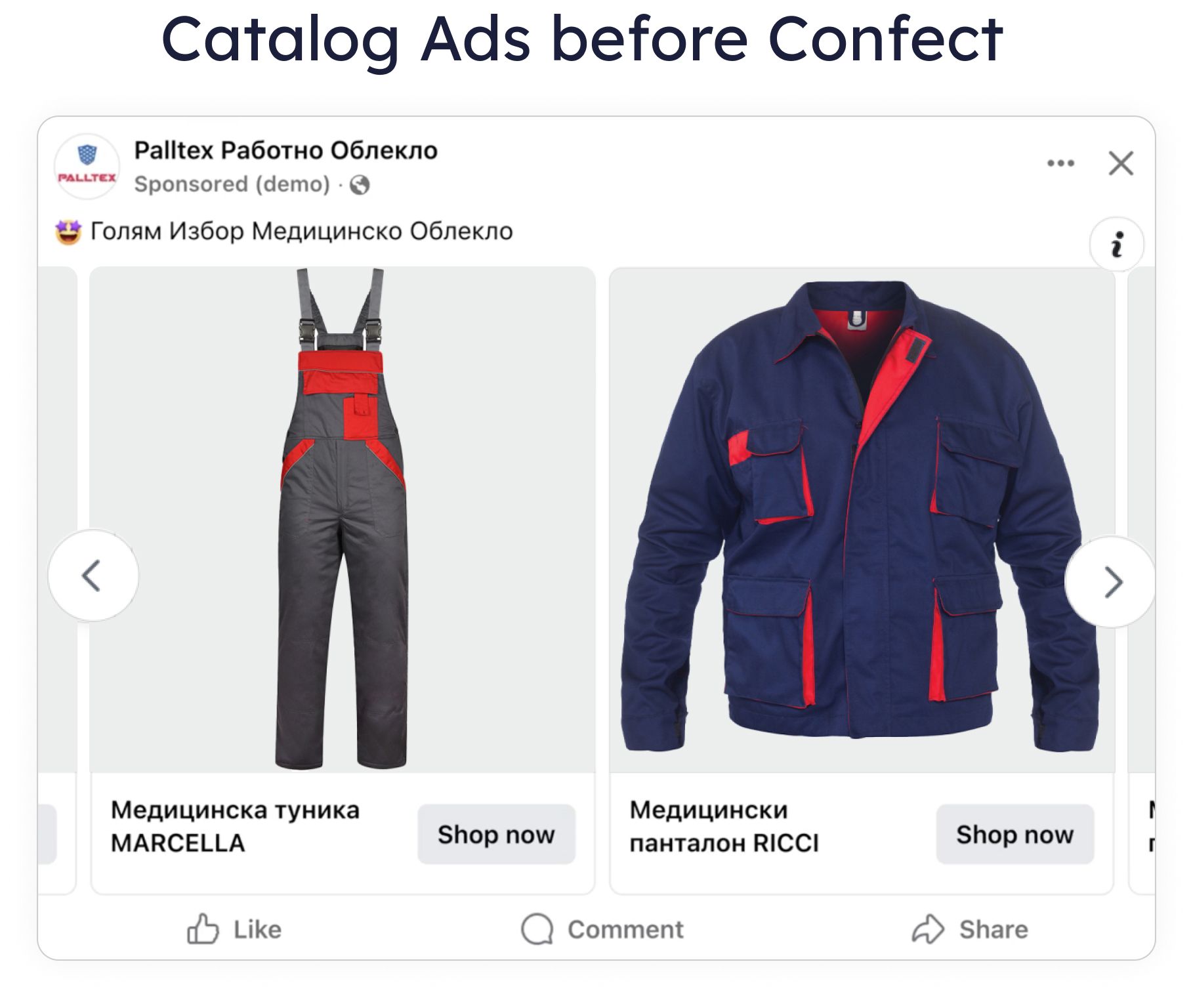
ROImonks focused on making their client’s Catalog Ads perform better by using Confect to improve the look and message of the ads. They customized the designs to show off both how the products work and how they look, making them more appealing to customers.
They kept testing and tweaking things like design and price messaging, which led to much better results. We talked to Stamen Petrov, a Performance Marketing Specialist at ROImonks, about how they use Confect to boost their Catalog Ads and keep improving their designs.
The Results Using Confect for Their Catalog Ads
Stamen shared three key tactics they implemented using Confect that helped them achieve these impressive results:
Including relevant information in the catalog ad design
Even though Palltex (ROImonks' client) is selling workwear, which in its roots is a very functional piece of clothing, looks can never be ignored when you're selling clothing; this was one of the primary considerations when they first started testing out different product information in the design.
This lead to the current always-on setup in the example below, which includes (among other elements) a packshot of the product and two additional images showing the product in use, either a regular model image in a studio or a picture from a real-life situation.
The design change immediately impacted performance, resulting in a 60% increase in ROAS compared to the default design.
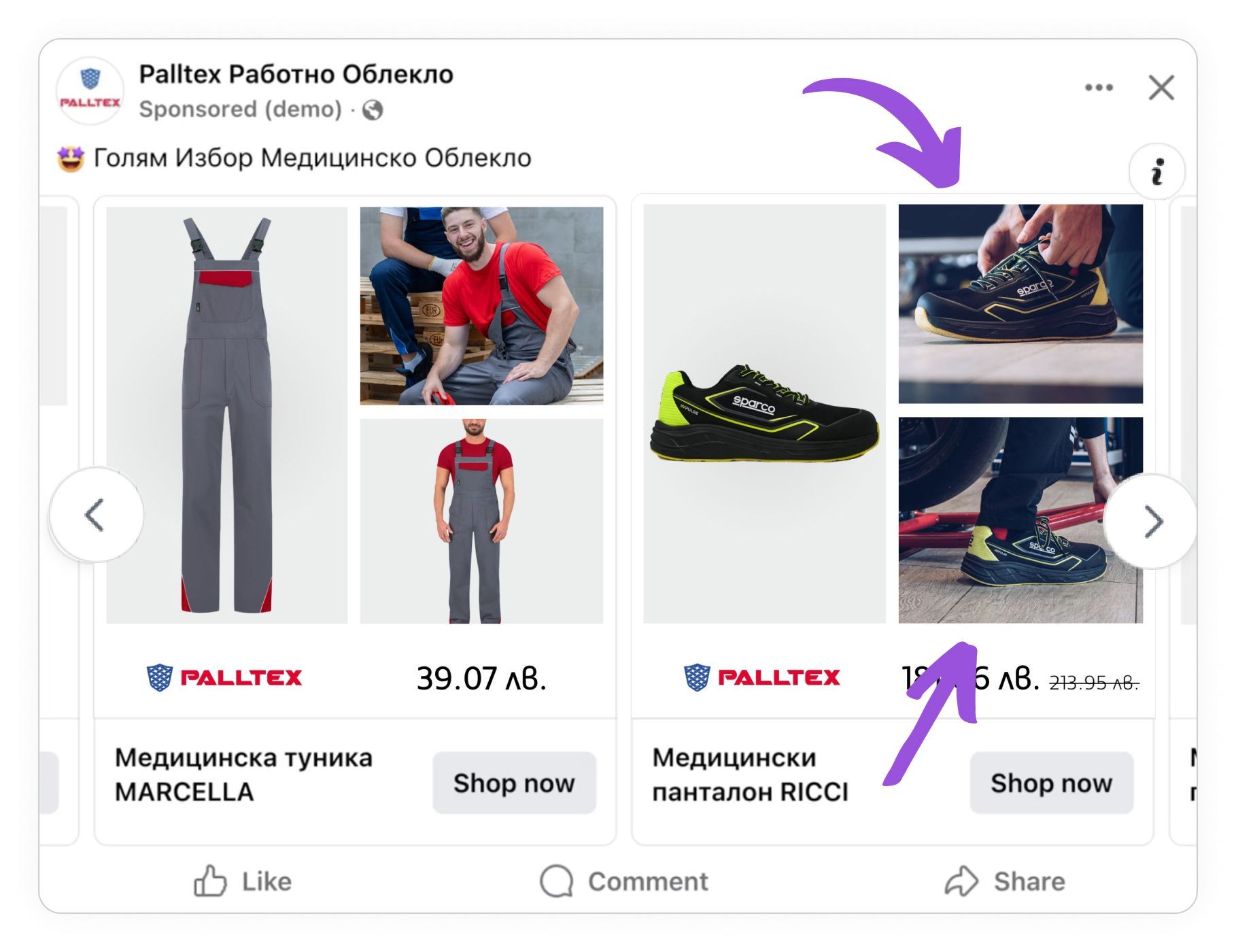
It's a great example of how important it is to personalize your catalog ads to your products and your audience because, of course, this ad resonates better with the audience than the ads with only the packshot.
ROImonks also knows that it's not only the looks that sell in this industry, but the price is also a really important factor.
Therefore, they also include the price together with the sale price (if the product is discounted), but it's still given a less-featured spot than the additional images.
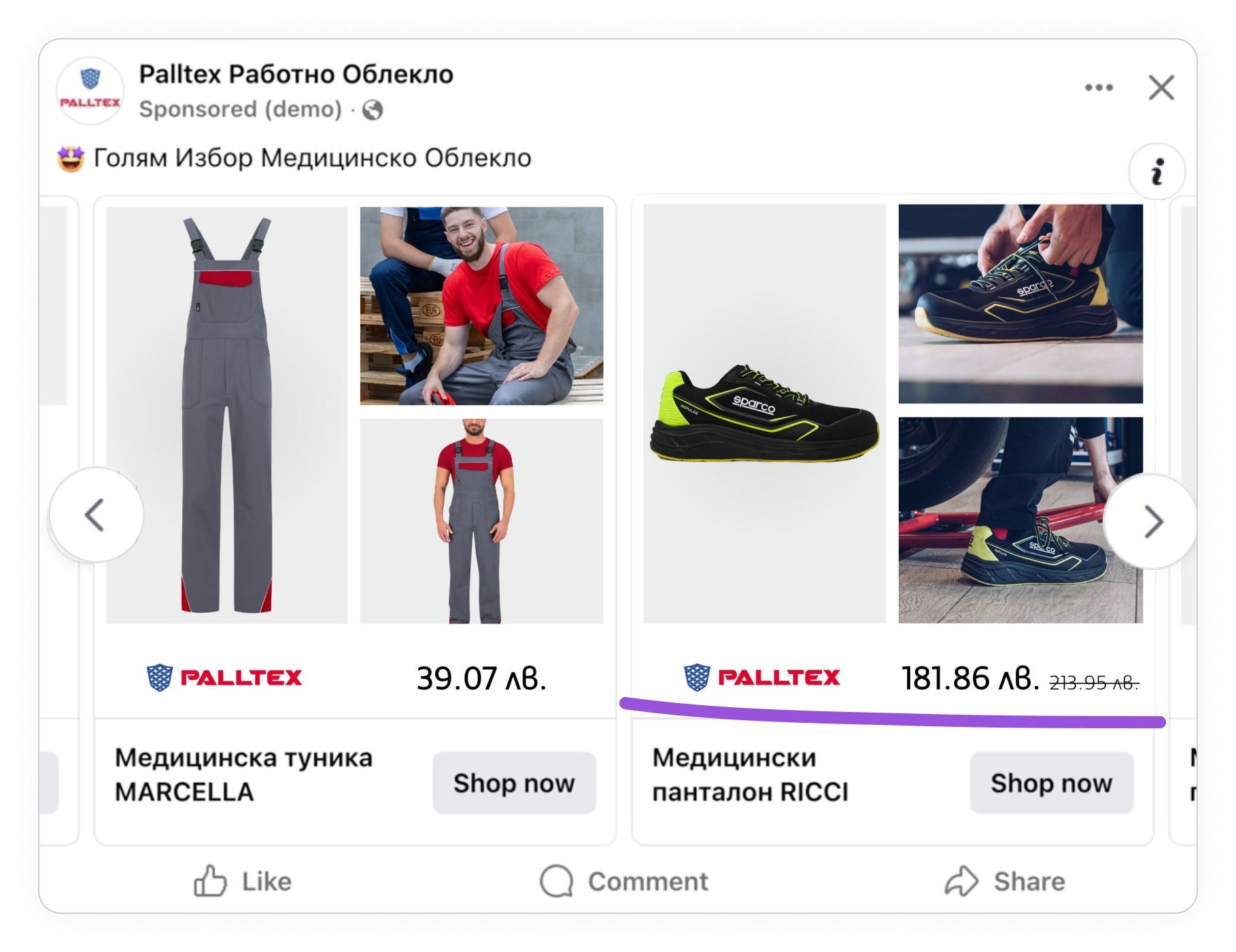
The custom designs go beyond just displaying prices. ROImonks also includes color-coded labels for quick recognition of sale and outlet items. For example, a red label signifies a sale, while a blue label indicates a limited stock outlet product.
These visual cues allow customers to instantly recognize deals without having to read the fine print, making for a smoother browsing experience.

Ultimately, the custom design strategy allows ROImonks to effectively communicate pricing status, keeping their client's brand top of mind and creating a seamless shopping experience.
 Stamen Petrov
Performance Marketing Specialist @ ROImonks
Stamen Petrov
Performance Marketing Specialist @ ROImonks
Backup templates for flexibility and A/B testing
Another key improvement for ROImonks was the use of backup templates, which were initially meant as a contingency plan but turned out to have a remarkable impact on performance.
By running both the original design template and the backup template in parallel, ROImonks saw a 97% increase in ROAS and a 70% higher CTR, while reducing cost per purchase by 60%.
What began as a safety net for when product data didn’t meet the requirements for the primary design evolved into a game-changer. Stamen explains, “The template that we initially intended to serve as a backup actually outperformed the original template.”
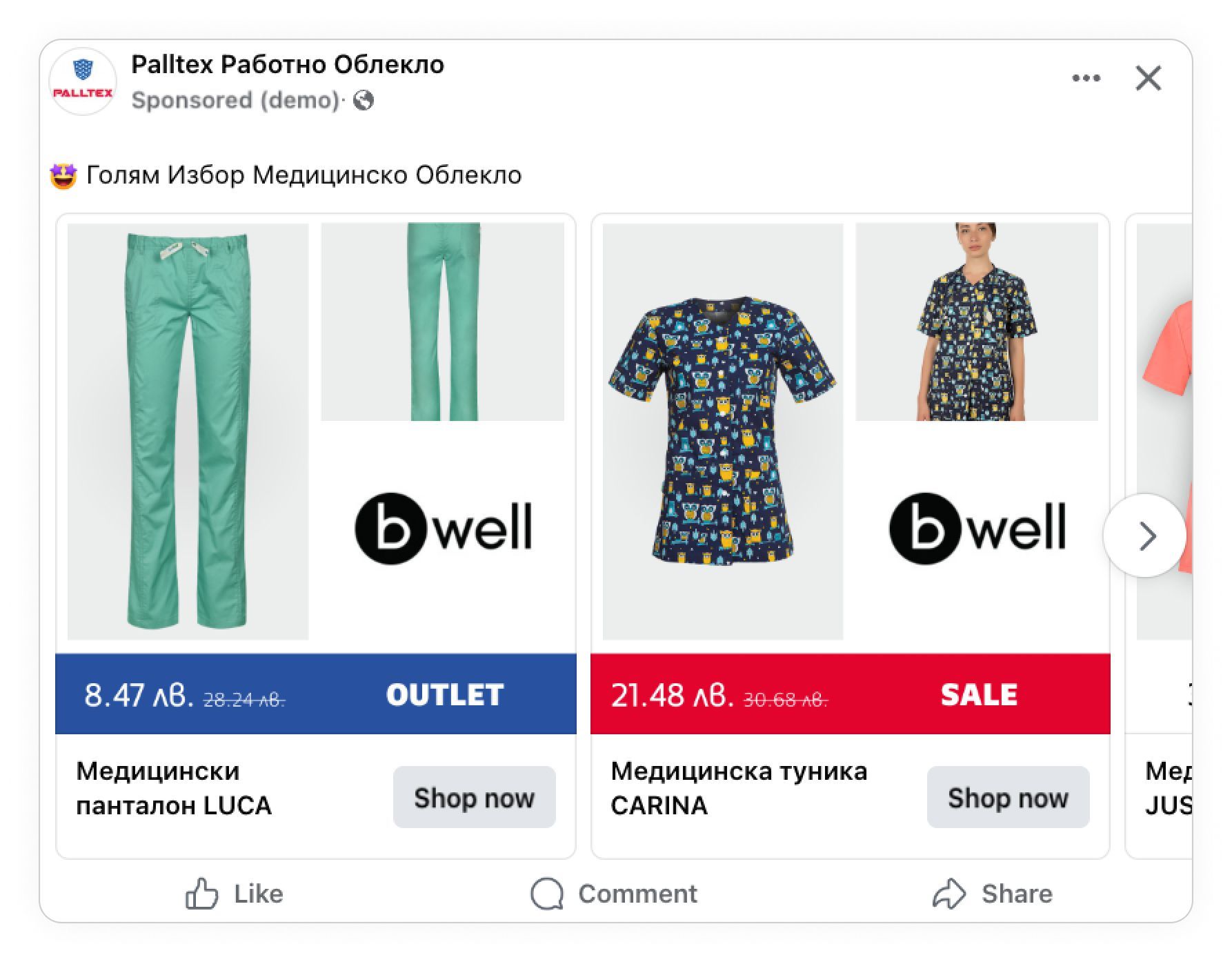
This insight showed that different customers responded better to different types of presentations. Some preferred seeing products in context, with lifestyle shots, while others focused on brand identity, preferring a more prominent display of the logo - showing that not performing tests can deprive you of the best results!
This led ROImonks to run both designs simultaneously, catering to multiple customer preferences. The A/B testing approach not only improved performance but also highlighted the importance of continuously testing new hypotheses.
As Stamen noted, “What we learned is that neither design is superior - they both serve their purpose. So we keep running both, and they both work great.”
Leveraging sale urgency to drive conversions
Emphasizing time-sensitive promotions proved to be crucial for encouraging immediate purchases. By prominently showcasing sale items and stressing limited stock, ROImonks was able to create urgency and prompt their client's customers to act quickly.
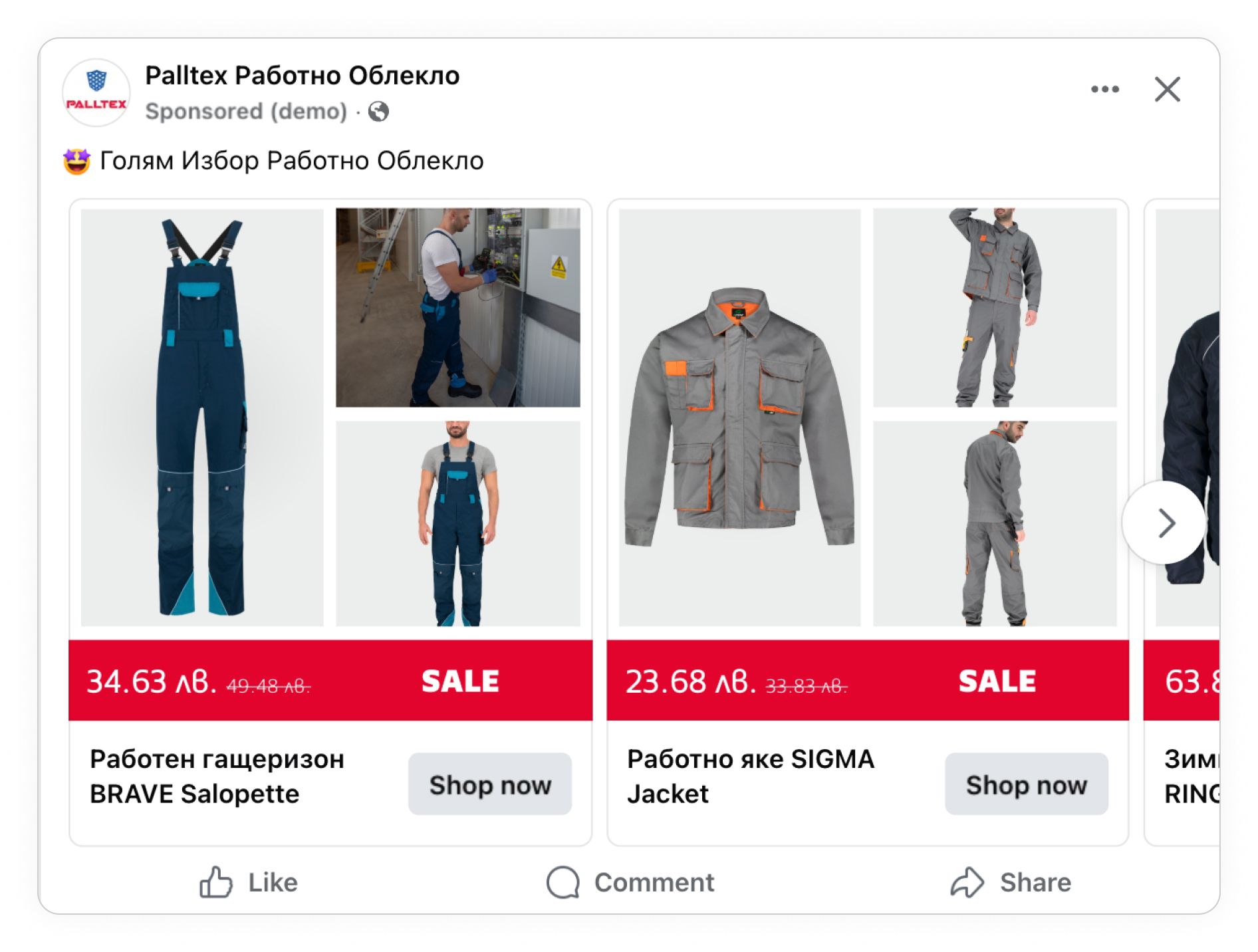
ROImonks uses various price categories to communicate product status, with unique templates designed to create urgency.
Outlet items, for instance, are labeled with a purple tag to signal limited stock and a better price, while sale items feature a red tag to indicate a discount.
This clear distinction ensures customers know whether they’re dealing with a time-limited offer or an item that might sell out soon.
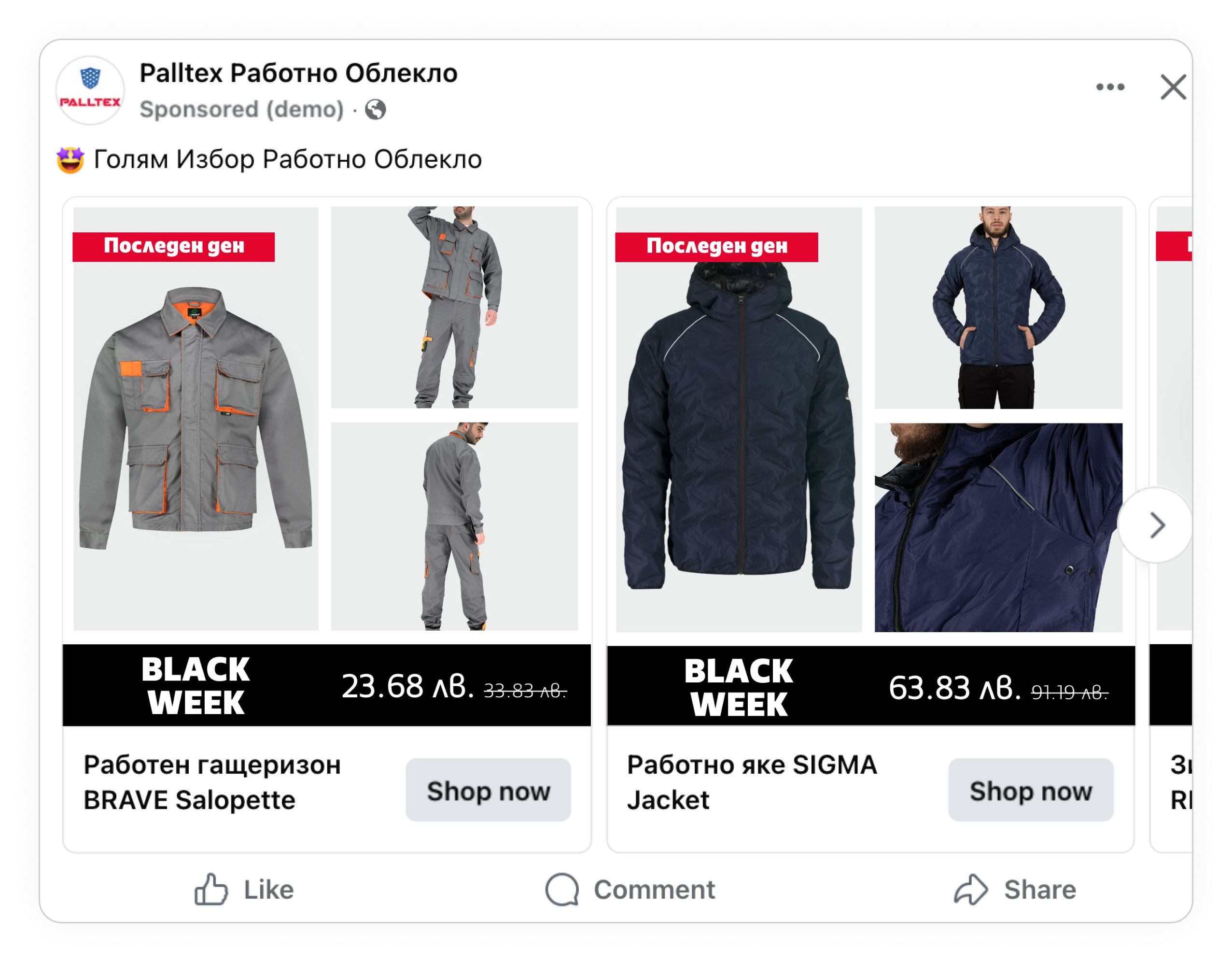
The urgency works particularly well during major sales events like Black Friday, where specific designs communicate the special Black Friday price.
By running these designs in parallel, ROImonks ensures that their client's customers always see the most relevant offer.
The use of these visual cues has significantly improved performance, with a 47% higher ROAS when using sale designs compared to standard templates.
Conclusion
ROImonks success with Catalog Ads and Confect highlights the impact of strategic design and continuous optimization.
By customizing their client's Catalog Ads, testing backup templates, and emphasizing sale urgency, they were able to increase ROAS by 60%, reduce cost per purchase by 59%, and boost CTR by 63%.
Their results demonstrate that even small design tweaks can lead to major performance gains.
ROImonks approach serves as a great example for eCommerce brands looking to optimize Catalog Ads for better efficiency, adaptability, and revenue growth.
